
There were quite a few wild and whacky ideas floating around about how to celebrate the new Millenium back in the late 1990s, but this one is surely in a league of its own.
A keen amateur geologist, Austin Lockwood of the Ravensbourne Geological Society had been visiting Lochinver in the north-west Highlands, and spotted some blocks of Lewisian Gneiss.
Lewisian Gneiss, he reasoned, is over 2 billion years old, so why not bring some boulders down to mark the second Millenium in Bromley?
And also give a chip of the rock each to 50,000 local school children.
He wrote a paper in the winter of 1999 explaining his thoughts.
“I discovered an immense pile [of Lewisian Gneiss boulders] at Lochinver Harbour, which contains large numbers of boulders of the size and age we require, in attractive banded Lewisian Gneiss.
“This rock pile, which belongs to Highland Council is one of their stockpiles and they use the material for sea defences, road repairs and the like.”
Mr Lockwood, sadly now deceased, explained that the material resulted from the removal of part of a hillside some years earlier when the onshore harbour facilities at Lochinver were subject to major extensions.
A plan evolved to place twenty—although in the end it was 19— Lewisian Gneiss boulders at sites around Bromley and give a small piece of rock to every school child in the area.
Negotiations proceeded with Highland Council and on February 3 2000 a lorry from Lochinver arrived at Crystal Palace park with twenty large boulders and ten tonnes of crushed rock, a gift from Highland Council.
A rocky road to unusual millennium project
The Millenium project proved to be quite some exercise.
Volunteers were tasked with washing, sorting and bagging the 50,000 individual pieces of rock.
They were placed in 500 buckets, ready for distribution.
The Heritage Lottery Fund kicked in with some funding and Bromley Council selected the twenty sites for the boulders.
Readying the sites was a bit of a palaver.
Foundations were prepared, using crushed stone inside a wooden frame cemented over with rounded flint cobbles.
It took several months to get that done, and on May 20, a grab lorry fitted with a special lift delivered and placed each three-tonne Lewisian Gneiss boulder on its prepared site.
Bromley Council then provided the stainless steel plaques and special fixings.
Mr Lockwood must have experienced some local bemusement as to why rocks from 600 miles away were being used.
He gave a statement explaining: “The oldest rock we have near Bromley is chalk,— a mere youngster at around 65 million years old—and horrible sticky London clay.
“Lewisian gneiss rock has got a terrific history and is a very attractive rock with nice banding.
“It was here even before the Atlantic Ocean was formed, when that stretch of the west coast of Scotland was attached to Canada and Greenland.”
Meanwhile, arrangements were made for twenty Highland school children to come down in the July and stay with families from three Bromley primary schools.
They were from Kinlochbervie and Lochinver primary schools, and came for a week to enjoy trips to the Millennium Dome and Natural History Museum.
The Millennium Rocks were celebrated with a dinosaur picnic in Crystal Palace Park, arranged by the Ravensbourne Geological Society.
Dinosaur picnic attended by thousands
The picnic, blessed with good weather and attended by some 3,000 people, was held in the marked-out shape of a giant iguanodon some 120 metres in length.
The Highland children worked a rota system to distribute the Lewisian Gneiss chips to some 2,000 local children present.
Mr Lockwood said: “I am hopeful that the project will set up and equally long-lasting friendship between two fishing villages and Bromley.”
Piper at the unveiling
Piper Corporal Ron Olley joined the Mayor, councillor David Crowe as he unveiled the boulder in Crystal Palace park, as simultaneously the boulders at all the other sites around Bromley were unveiled by local dignitaries and representatives of the Ravensbourne Geological Society.
All the nineteen boulders installed are still in place.
They’re among the oldest objects in London.
It had originally been hoped that one more could be installed at Down House, Charles Darwin’s home, but this never happened.
Embarrassing spelling mistake
Embarrassingly, one of the rocks, at Glades shopping centre outside Belgos, revealed a spell check fail in its plaque, after it had had to be replaced in 2018.
It referred to Lochinver as ‘Lockinver’ — wince.
History doesn’t record whether famous son of Bromley David Bowie was aware of the project. But then, his was a different kind of rock.
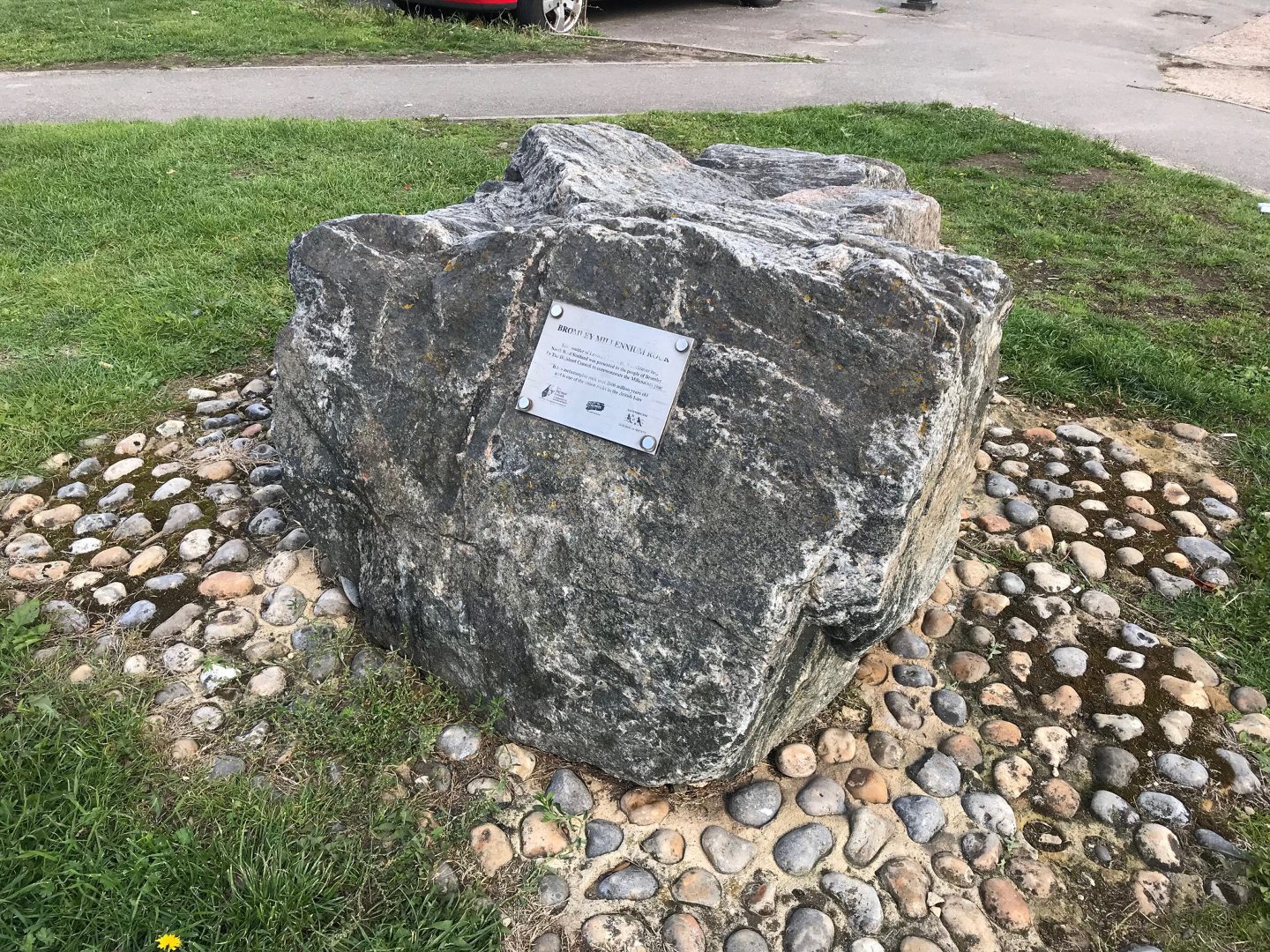
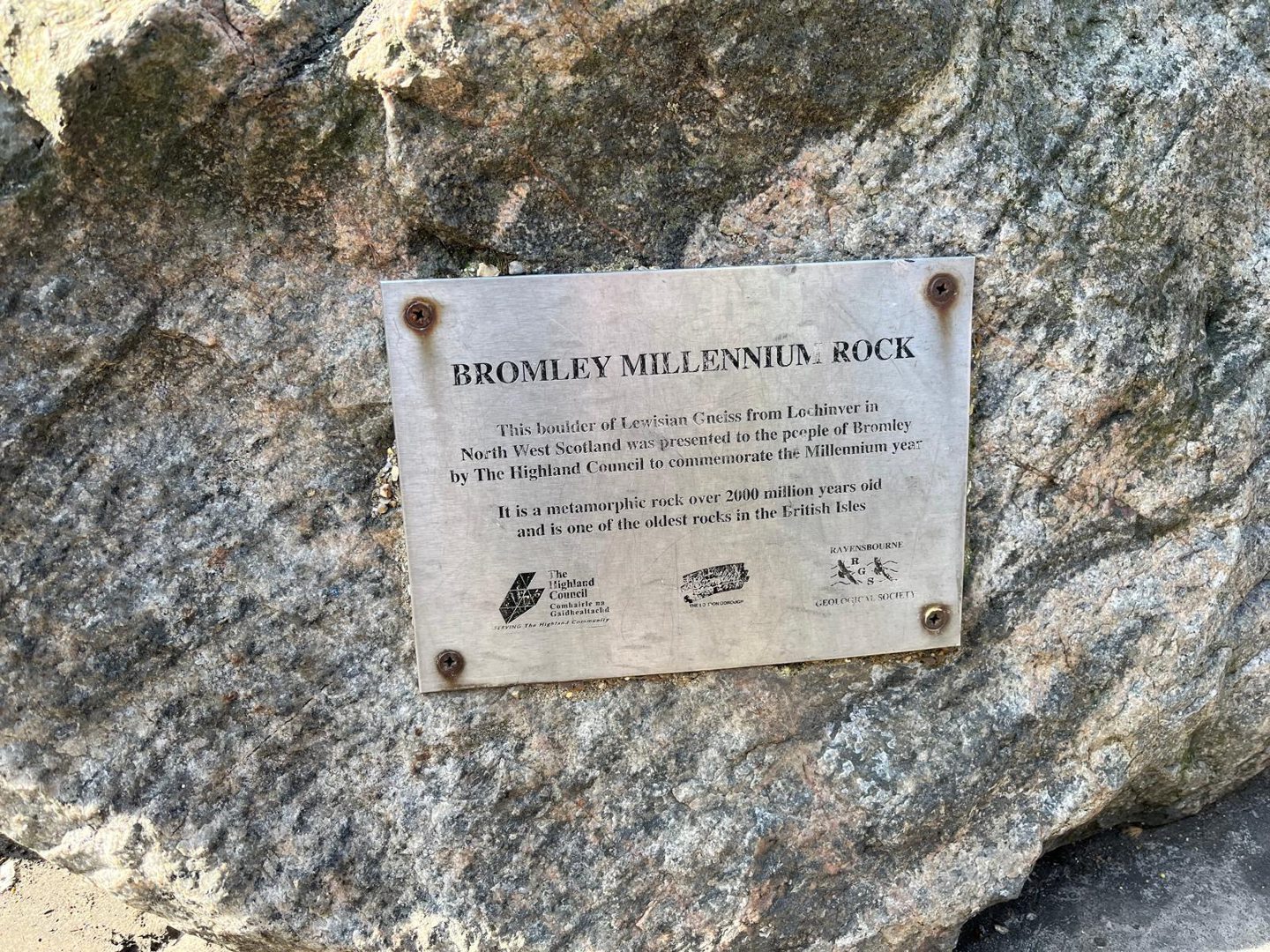
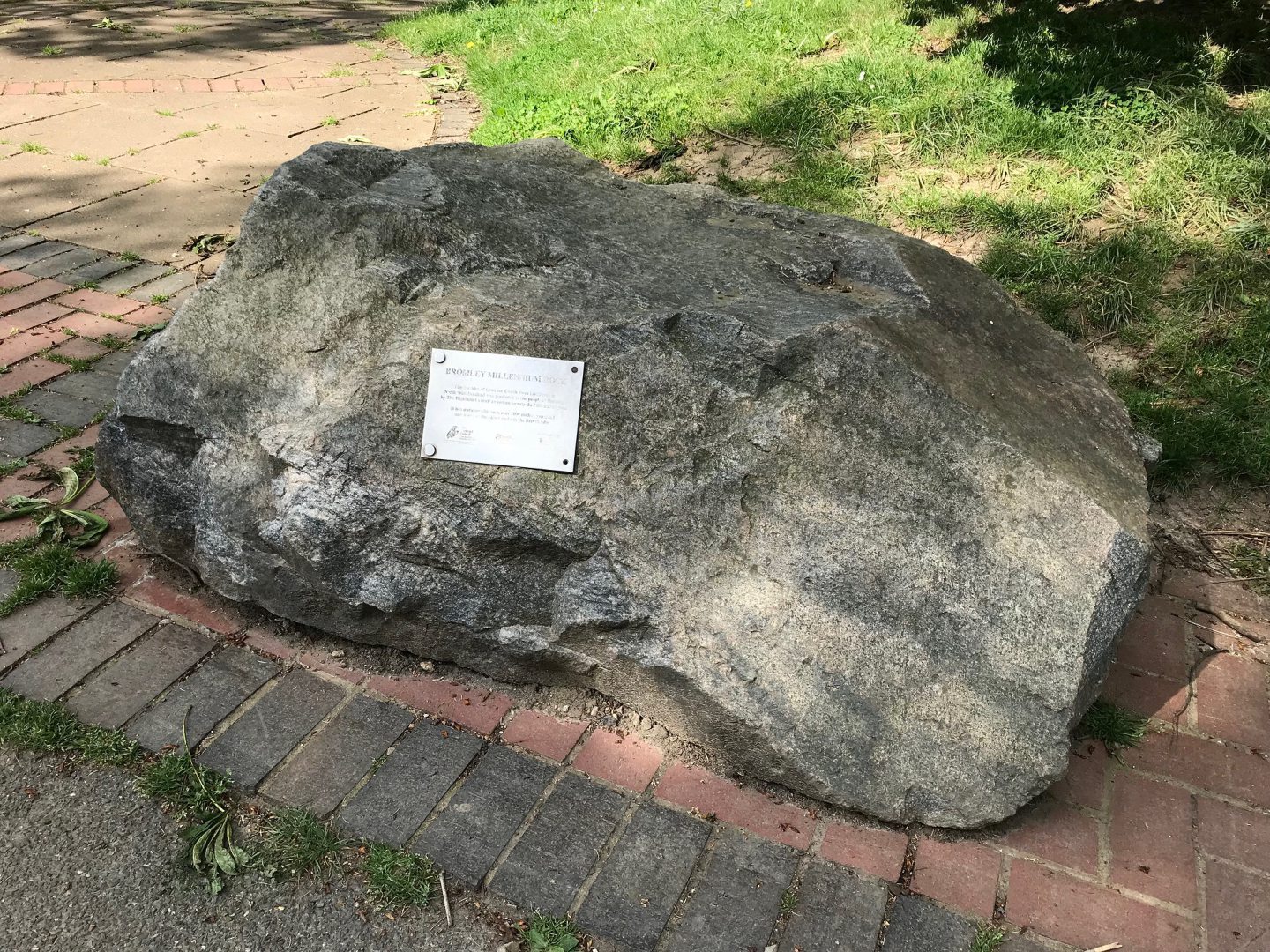
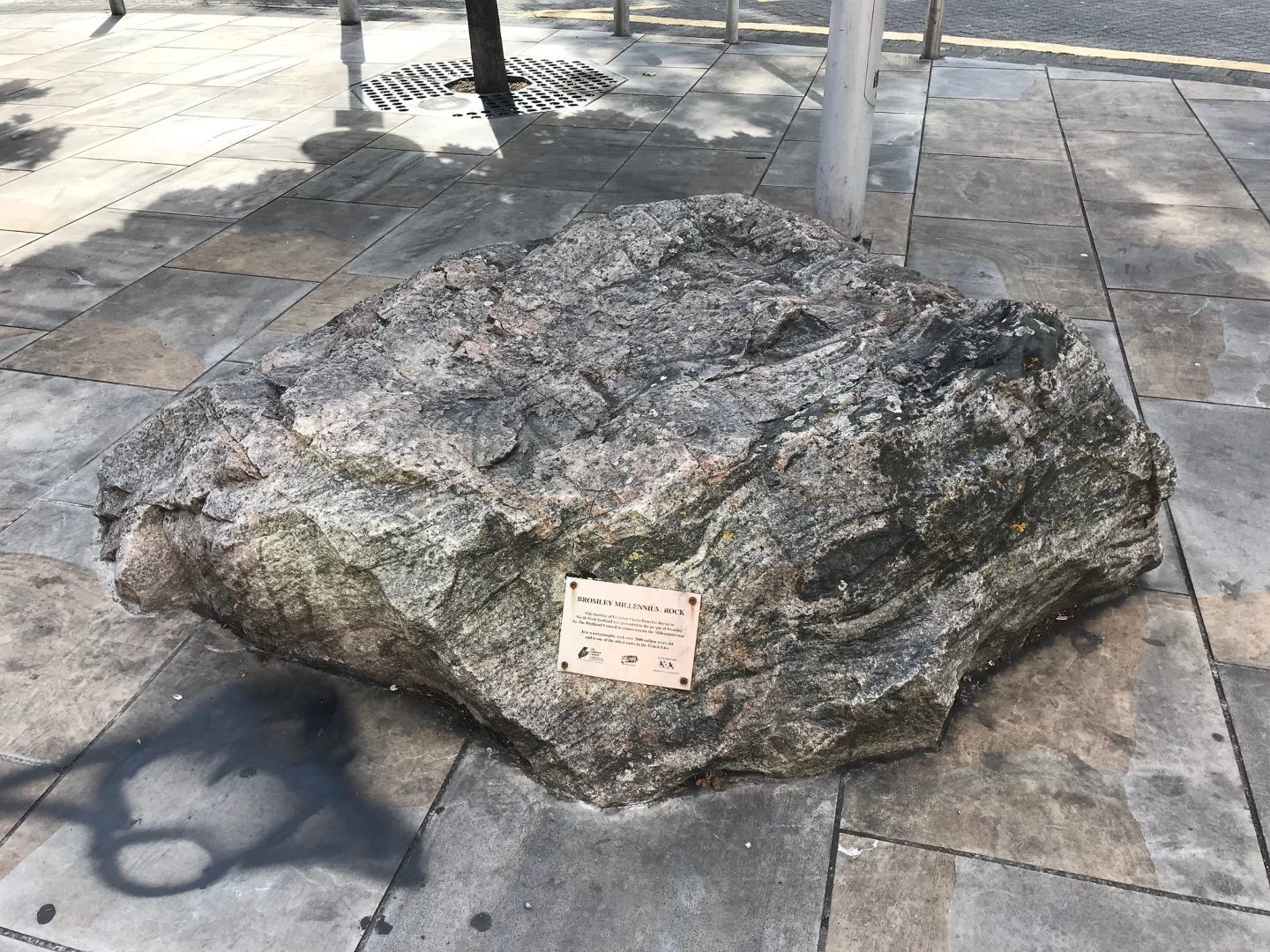
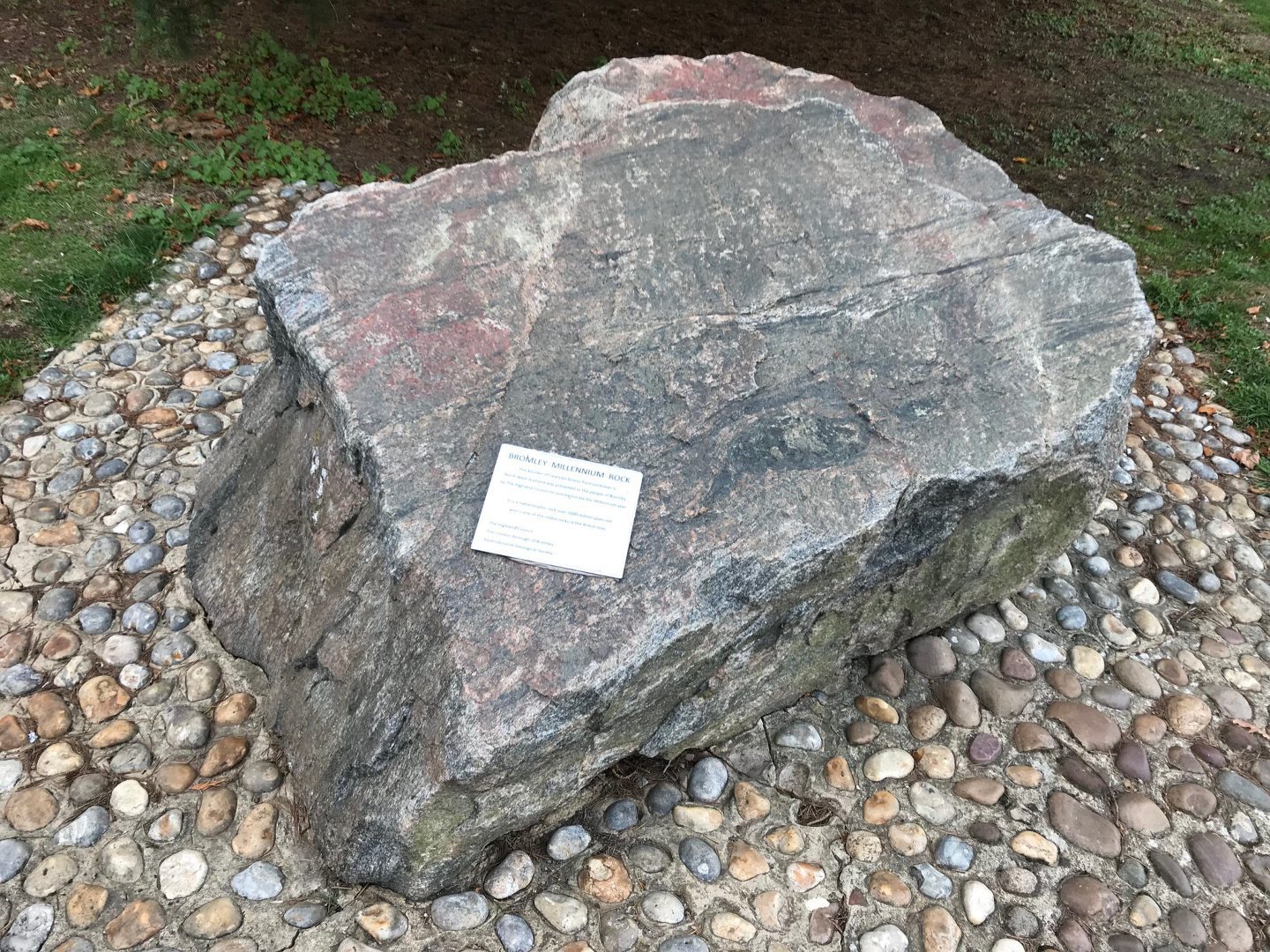
Conversation